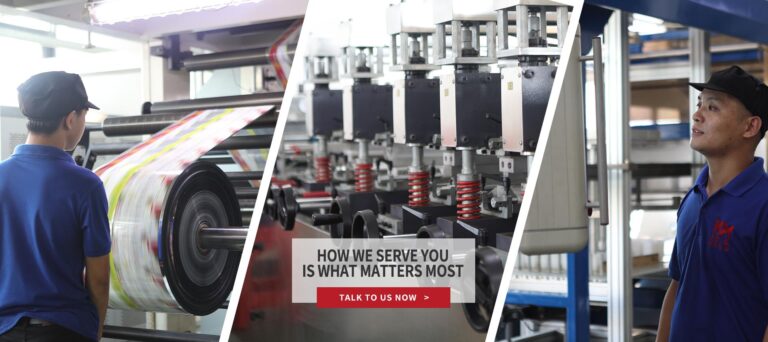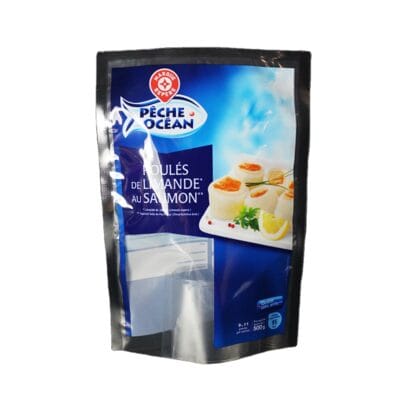Selecting the Right Vacuum Sealing Bags: Har tomonlama qo'llanma
Selecting the Right Vacuum Sealing Bags: Har tomonlama qo'llanma
Sometimes when we purchase or customize vacuum sealing bags, we often emphasize thickness, believing that thicker bags indicate better quality. In reality, thicker bags do not necessarily mean better quality. The appropriate thickness of vacuum sealing bags depends on their size, and using thicker bags incurs higher costs.
Masalan; misol uchun, in the case of aluminum foil vacuum sealing bags, the material cost of aluminum foil is not cheap. If the bags are too thick, they may lose elasticity and be more prone to damage when folded during storage. Qo'shimcha, at low temperatures, overly thick vacuum sealing bags can become brittle and break easily.

What are Vacuum Sealing Bags?
Vacuum sealing bags are storage bags used in conjunction with vacuum sealers. Vacuum sealing is the process of removing air from the bag before sealing it. When done correctly, this method can extend the shelf life of the contents by slowing down oxidation and inhibiting the growth of mold, bakteriyalar, and yeast. Vacuum sealing is commonly used for food preservation, although it can also be used to protect important documents or materials from air and moisture.
Most vacuum sealing bags are made of durable, flexible plastic materials and consist of multiple layers of different polymers or plastics. One side usually has a textured pattern that is crucial for the vacuum sealer to successfully extract air from the bag. When the bag’s opening is placed into the vacuum sealer, the machine extracts the air and uses heat to seal the opening, forming a tight barrier.
These bags are used in both household and commercial settings to improve the storage of items like meat, sabzavotlar, and cheese, making them last longer and stay fresher while reducing food waste. Vacuum sealing bags are available in pre-cut sizes or rolls and can be cut and sealed at one end to create custom-sized bags.

How to Choose the Thickness of Vacuum Sealing Bags
Choosing the right thickness of vacuum sealing bags should also consider the environment and purpose of use, as different scenarios and requirements may call for different thicknesses.
Masalan, vacuum sealing bags used in high temperatures or low temperatures should have a thickness that can adapt to temperature changes to ensure performance and effectiveness. Qo'shimcha, the thickness of the bags used in vacuum sealing packaging machines should match the machine to ensure smooth operation and high efficiency.
Different materials require precise exposure to high temperatures during the sealing process to ensure effective bonding. Sealing temperatures typically range between 250°F to 450°F, depending on the material of the bag.
Sealing Temperatures for Different Vacuum Bags:
- Low-Density Polyethylene (Ldpe): Optimal sealing range: 270-370°F
- Polivinil xlorid (Pvc): Recommended sealing range: 300-350°F
- Polipropilen: Requires higher sealing temperatures of 380-450°F
The correct sealing temperature is crucial for creating a strong, leak-proof seal on the bag. Insufficient heat may fail to seal properly, while excessive heat can cause the bag material to melt or burn.
Using a heat-controlled sealing device is essential, and it is advisable to test the temperature on sample bags to determine the optimal heat settings. Achieving the precise sealing temperature is vital for securing items inside the bag and extending shelf life—a valuable tip for anyone involved in packaging.
Recommendations for Choosing the Right Vacuum Sealing Bags
When you’re unsure about selecting the appropriate vacuum sealing bags, here are some recommendations from Kaixuan qadoqlash:
Different products may require vacuum sealing bags of varying thickness, depending on their shape, hajmi, va chidamlilik.
Masalan, products with sharp edges or corners (such as bones, yong'oq, or metal parts) may need thicker bags to prevent punctures or tears. Boshqa tarafdan, soft, elastic, or delicate products, like bread, pishloq, or flowers, may need thinner bags to maintain their shape and texture. We recommend a thickness of 3-4 mils for such products.
Here is a general guideline for recommended thickness based on various products:
| Mahsulot | Qalinligi (mil) |
|---|---|
| Nuts | 4-5 |
| Metal Parts | 4-5 |
| Bread | 3-4 |
| Cheese | 3-4 |
| Flowers | 3-4 |
| Meat | 3-4 |
| Fruits | 3-4 |
| Vegetables | 3-4 |
| Cookies | 3-4 |
| Coffee Beans | 3-4 |
| Tea | 3-4 |
| Candy | 3-4 |
| Medicine | 3-4 |
| Uy hayvonlari ovqat | 4-5 |
Items Not Suitable for Vacuum Sealing
Although vacuum sealing is a versatile form of food storage, some items should not be vacuum sealed:
- Liquids: They cannot be vacuum sealed as the machine will extract the liquid from the bag and fail to form a proper seal, causing leakage.
- Carbonated Beverages: Removing air from carbonated drinks (soda, energy drinks, beer, va boshqalar.) leaves a vacuum that can cause the plastic sides of the bottle to collapse. The internal pressure of the liquid can also cause it to expand the casing.
- High-Fat Foods: Fat in food deteriorates under vacuum conditions, and you certainly should not seal any foods that might clog the vacuum sealer.
- Sharp Objects: Unpackaged metal items can easily puncture the sides of vacuum bags.
- Raw Potatoes, Onions: These foods release gases which can affect the seal.
- Opened Cans or Jars: Since the internal part of the container remains unsealed, food inside can still deteriorate if stored for too long.
- High-Moisture Items: Such as lettuce, which can quickly oxidize and become soggy.
We hope these recommendations help you better select and use vacuum sealing bags. Kaixuan qadoqlash is dedicated to providing you with high-quality packaging solutions.


